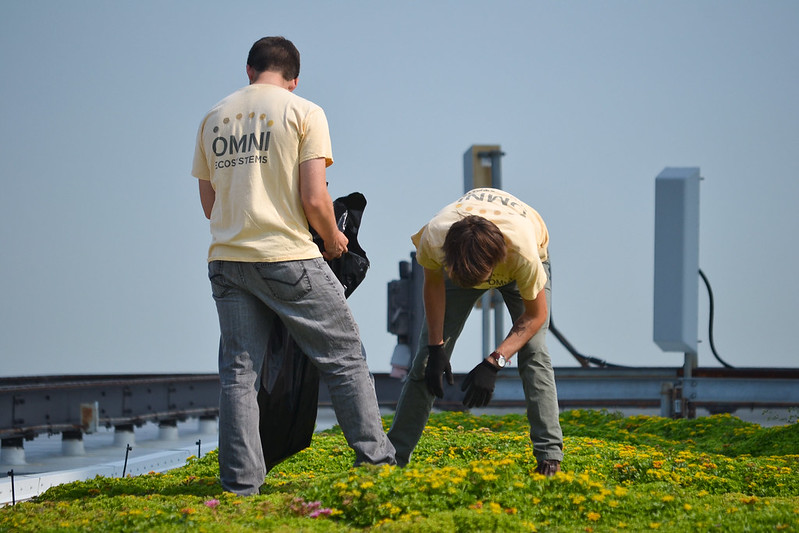How to scale-up investment in green infrastructure
Michael Mullan, our Lead on Infrastructure, explains how projects can move from the traditional model that aims to limit conflicts between infrastructure and nature, to ones that combine the green and the grey
O ne of the big opportunities for adaptation lies in investing in the protection or enhancement of nature to strengthen people’s resilience. Known as green infrastructure, or nature-based solutions (NBS), these interventions can be extremely cost-effective, either as a substitute or a complement to traditional infrastructure.these interventions can be extremely cost-effective, either as a substitute or a complement to traditional infrastructure. Working with nature can also provide additional co-benefits, for example by storing carbon rather than causing emissions.
Yet, globally, we are nowhere near to achieving the potential for NBS. Despite some inspiring examples, the use of NBS remains the exception rather than the rule. For example, in the public sector, few Nationally Determined Contributions (NDCs) fully exploit the potential of nature for adaptation. In the private sector, only 3 percent of nearly 2,000 companies reported using natural ecosystems as part of their climate adaptation strategies.
Not only do we need more investment in green infrastructure, but we also need to enable bigger interventions. While a roof garden is nice for a buildings’ inhabitants, thousands of square meters are needed to have an appreciable impact on the urban heat island effect. We need to be looking at the landscapes in their entirety rather than standalone projects. Funding needs to be commensurate with this scale.
Our work at the Global Center on Adaptation has a clear focus on working in partnership to catalyze adaptation impact at scale: mobilizing large finance flows to benefit large numbers of people. The reason for this is clear: the impacts of climate change are too dramatic and too urgent for us to be content with today’s insufficient rate of progress in tackling climate change.

AMA Plaza, a Chicago skyscraper contains a 6,400 square foot green roof. Photo by Center for Neighborhood Technology
Understanding the value of nature
Globally, there are likely to be tens of billions of dollars per year in economically worthwhile investments in green infrastructure. Just looking at mangrove protection and restoration, the Global Commission on Adaptation estimated that investing $100 billion would yield benefits of $1 trillion.
This large number, however, covers a diversity of needs: from planting some trees to avoid landslides on a rural road, to $2.6 billion wastewater program in Washington DC. Different financing models are needed for different contexts – but the key point is that collectively we need a portfolio of approaches that are scalable and can be sustained over the project lifetime. An implication of this is that the underlying revenue streams need to be big enough to support the desired scale of investment.
Where is this money to be found? The same underlying issue arises for thousand-dollar projects and multi-million-dollar projects: the benefits of nature are valuable but often not valued, so there is an insufficient revenue stream to cover the costs. Already, there are inspiring examples of innovations that have been developed to overcome this – ranging from resilience bonds to insurance for coral reefs. These have unlocked new financing streams and demonstrated new ways to channel resources to nature-based solutions. Building on these efforts, we see a conceptual innovation as providing a key part of the solution for funding larger-scale projects.

5,000 native plants and shrubs, treats stormwater pollution from five acres of impervious surface on the campus of MedStar Harbor Hospital in Baltimore. Photo by Will Parson/Chesapeake Bay Program
Scaling-up financing for NBS
The GCA’s approach for scaling green infrastructure is to go where the money is by linking nature with the broader infrastructure investment agenda. This starts with a conceptual shift: moving from a traditional model where we aim to limit conflicts between infrastructure projects and nature, to one where we combine green and grey infrastructure to provide the services that people value. For example, providing clean water by protecting watersheds reduces the need to invest in water treatment plants. If only 2% of current investment using traditional instruments (e.g. bonds, loans and equity) in infrastructure projects went towards green infrastructure, that would amount to almost $50 billion per year.
However, to achieve this, we need to move upstream in the infrastructure planning process. By the time projects have been developed, the use of a conventional approach is often already baked into the process. Cutting-edge analytical tools have been developed by the University of Oxford’s ECI that allow us to analyse how grey infrastructure and natural systems will be affected by climate change and use that analysis to develop priority projects. This process uncovers and demonstrates the value of investment in nature using metrics that are relevant to decision-makers such as, impact on service reliability, maintenance costs or asset lifespan.
This systems perspective effectively allows us to internalise many of the benefits from nature into the infrastructure planning process, generating a pipeline of bankable projects that make use of the tested financing models used for traditional infrastructure. GCA are bringing together governments, financial institutes and the private sector to put that into practice. The first country study will start next week, in partnership with the Government of Ghana, Oxford ECI, UNOPS and UNEP. The next cohort of countries will be announced at the Climate Adaptation Summit in January 2021. This complements the broader efforts to strengthen the enabling environment that were featured in my previous blog post.
The ideas presented in this article aim to inspire adaptation action – they are the views of the author and do not necessarily reflect those of the Global Center on Adaptation.